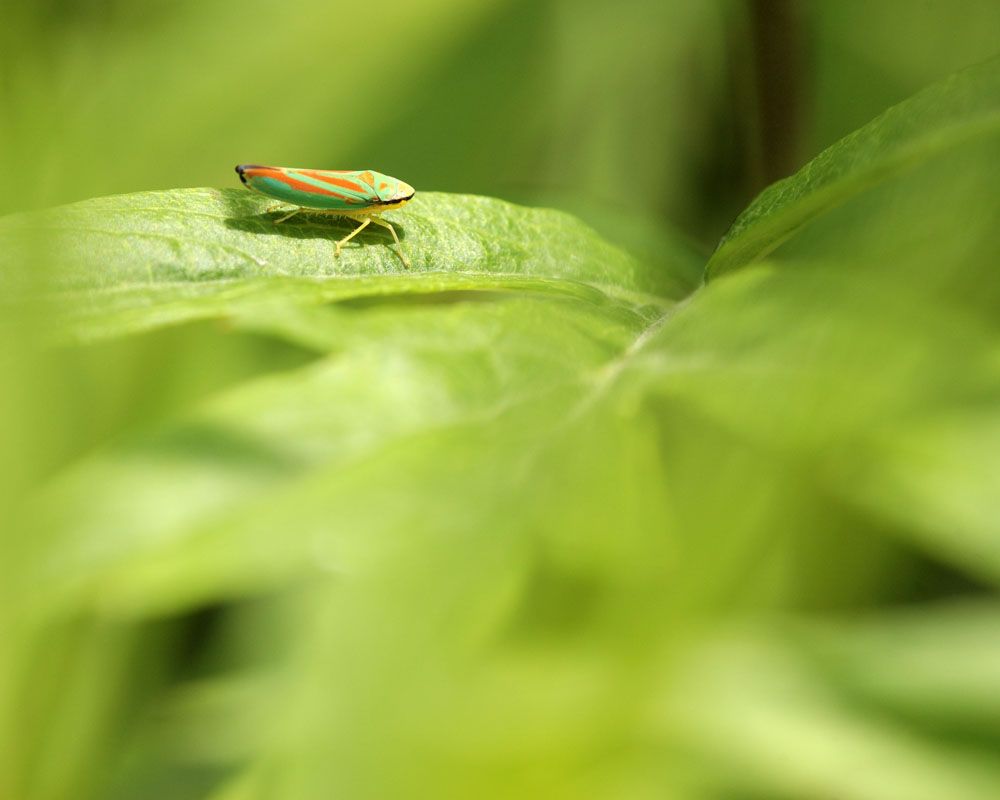
Leaf Hoppers
Leaf hoppers (Cicadellidae)
Leafhoppers may be found in residential gardens all across North America. Adults and nymphs eat plant fluids by puncturing the undersides of leaves. Plants get spotting (white flecks), yellowing, leaf curling, stunting, and deformation due to their poisonous saliva. They are also in charge of transferring the organisms that cause plant viral infections. Beans, corn, lettuce, beets, potato, grapes, roses, and other plants are shared, hosts.
Identification:
Leafhopper adults (1/4 inch long) are slender, wedge-shaped pests that fly or disperse rapidly when disturbed. They might be green, brown, or yellow in color, and they typically have colorful markings, depending on the species. Nymphs lack wings and have a lighter hue than adults. Both adults and larvae can sprint sideways and jump well.
Life cycle:
Adults spend the winter in crop waste or uncultivated areas near gardens. Females lay 1-6 eggs each day on the stems and more extensive veins of the leaves in late April. The immature nymphs molt five times before becoming fully-fledged adults, hatching in 6-9 days. The molting nymphs’ white cast skins are frequently discovered adhering to the undersides of broken leaves. It takes roughly three weeks from egg to adult. During the growth season, many overlapping generations may be completed.
Damage:
Leafhopper damage appears as light-colored speckling on plant leaves, produced by the leafhoppers draining sap and plant fluids from within the plant tissue. This slow feeding, if left unchecked, decreases the plant’s vitality over time, browning the leaves. Leafhopper damage is rarely severe enough to injure adult plants permanently; nevertheless, leafhopper feeding can stunt and distort young plants or new development. With some species of leafhoppers, disease transmission is a concern, and the honeydew generated by some can help spread fungal infections; for example, beet leafhoppers convey curly top viruses.
How to Control Leafhopper:
- Remove garden trash and other waste as soon as possible after harvesting to prevent overwintering.
- Leafhoppers can be kept at bay by using floating row covers as a physical barrier.
- Commercially accessible beneficial insects such as ladybugs, lacewings, and minute pirate bugs are ferocious eggs and young larval predators.
- To keep insect populations under control, apply diatomaceous earth to plants and spot treat with insecticidal soap. Effective treatment requires thorough coverage of both upper and lower infected leaves.
- BotaniGard ES is a potent biological pesticide that contains Beauveria bassiana, an entomopathogenic fungus that kills a wide range of agricultural pests, even resistant species! Weekly treatments can avoid insect population expansions and give protection that is on par with, if not better than, that provided by traditional chemical pesticides.
- As a last option, spot treat with potent, fast-acting organic pesticides if pest levels become intolerable.
